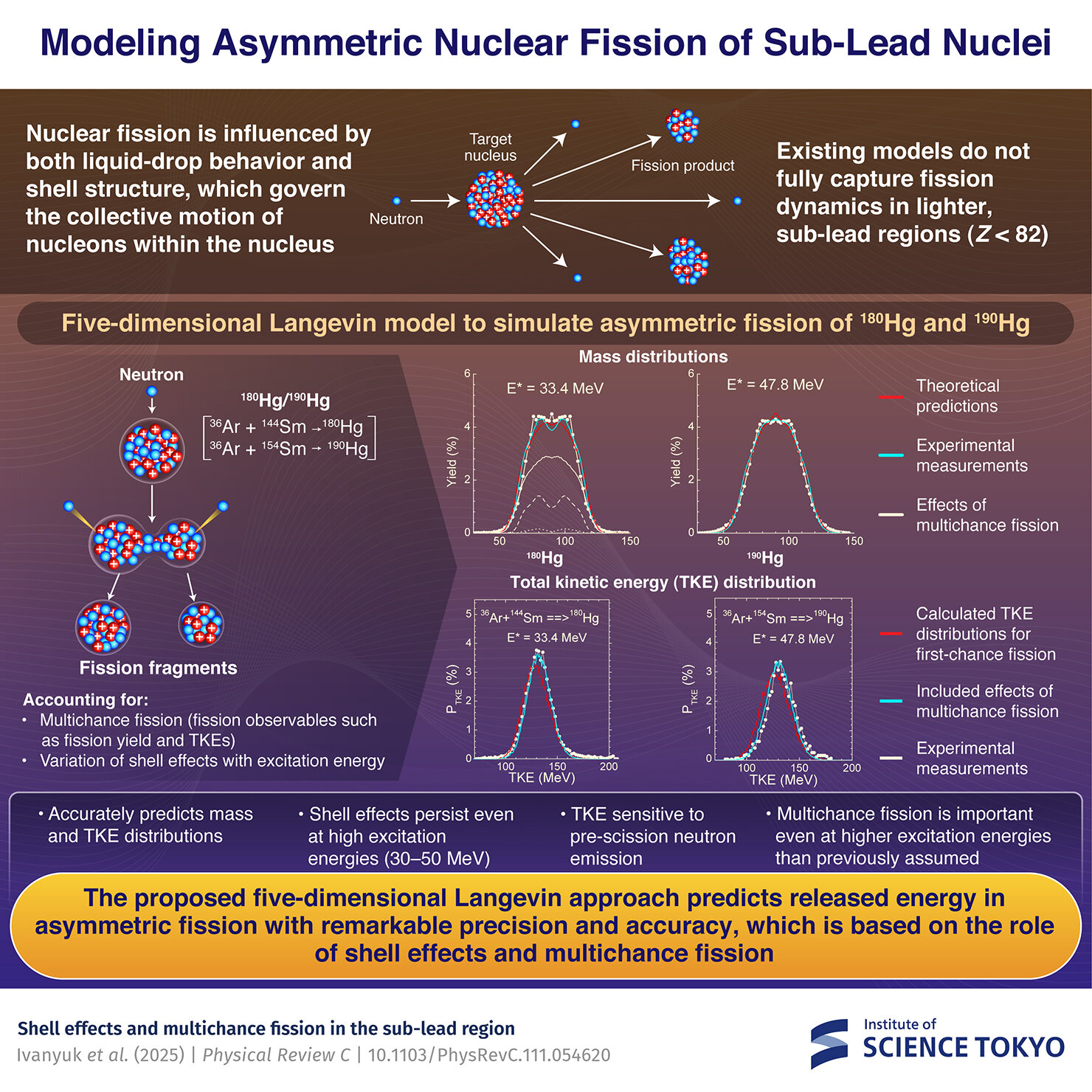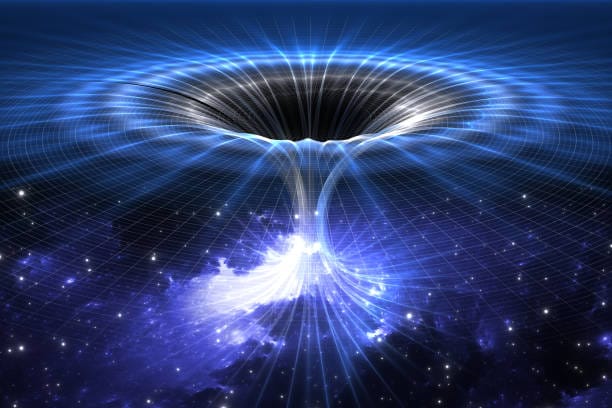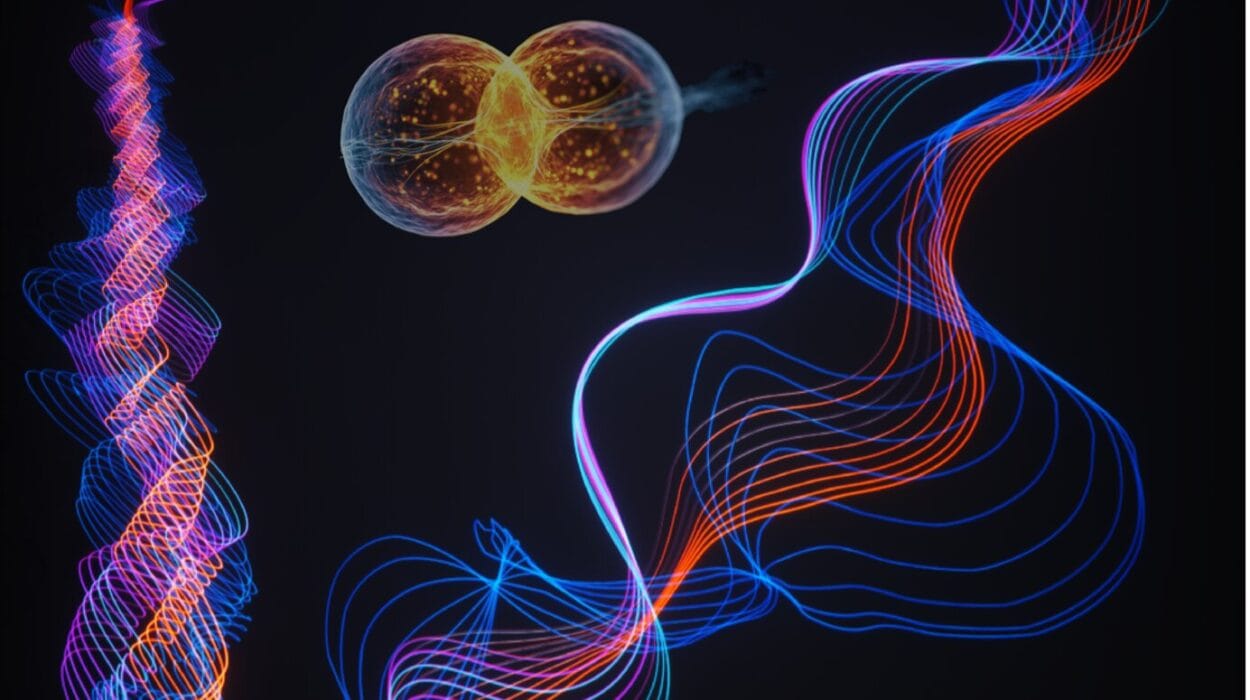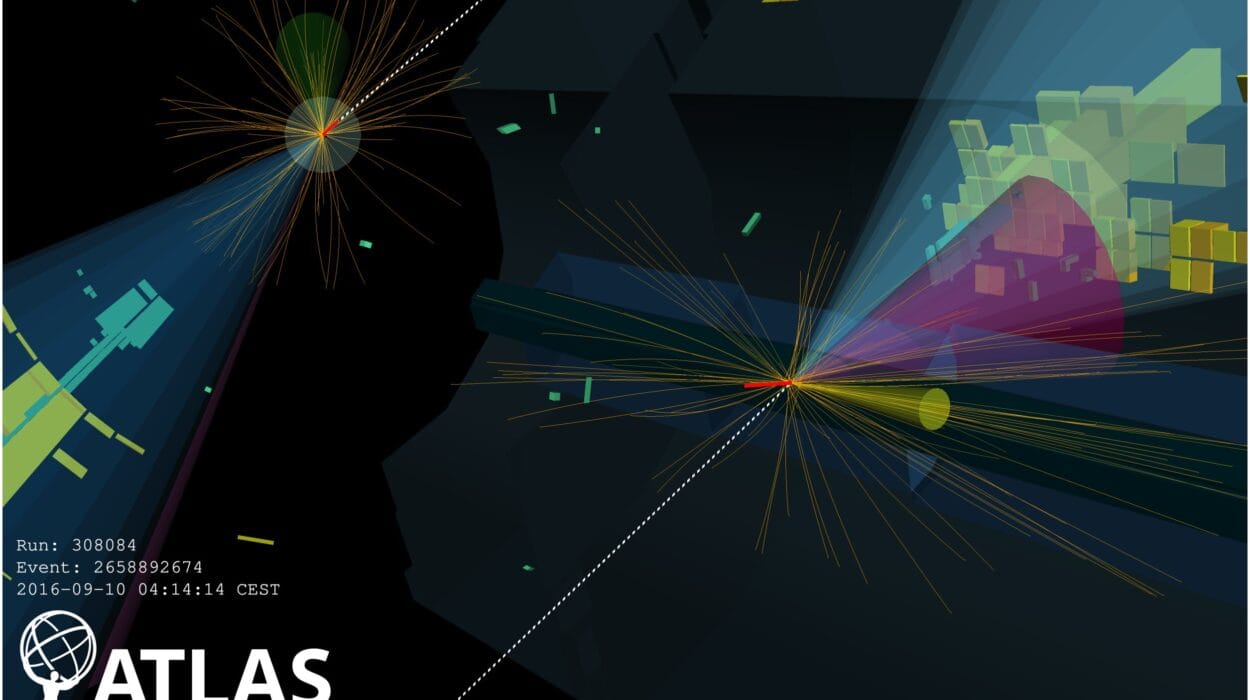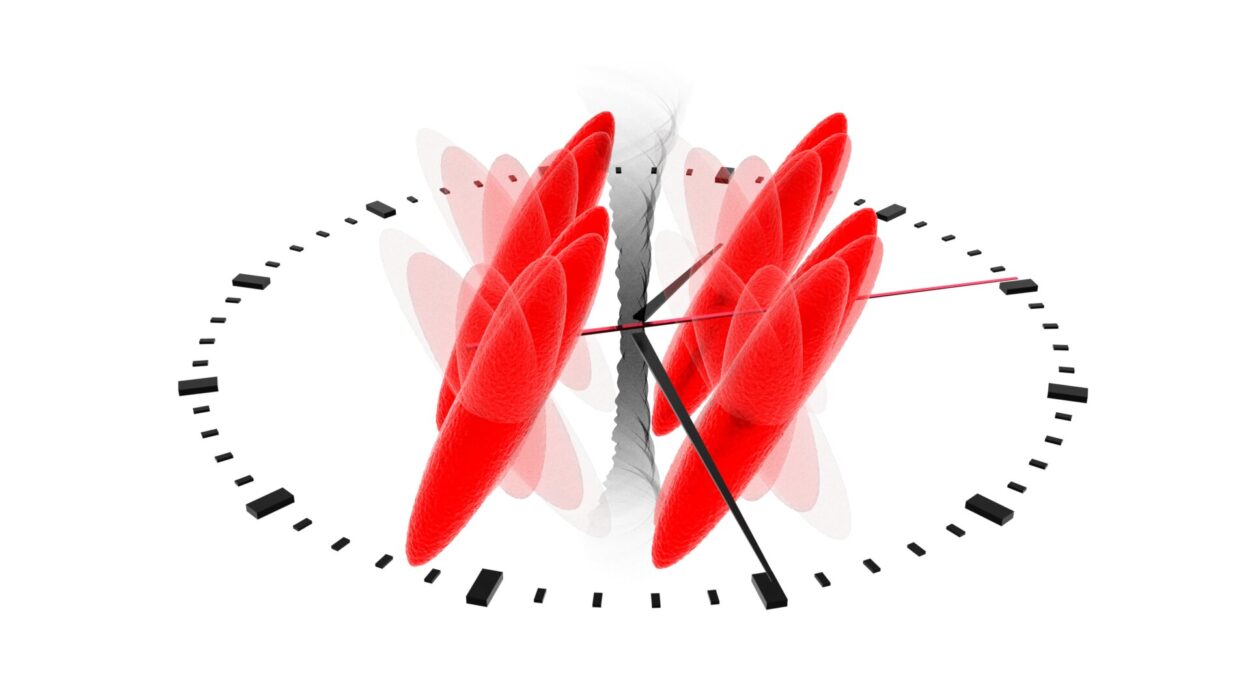In the hidden heart of the atomic world, where forces clash and particles dance on the edge of chaos, something strange is happening to mercury. Not the liquid metal in thermometers—but its atomic core, which, under certain extreme conditions, behaves in ways physicists never expected. Now, an international team of scientists has taken a bold step into the unknown, revealing the strange fission behavior of mercury using a revolutionary five-dimensional model.
The study, published May 20, 2025, in Physical Review C and recognized as an Editor’s Suggestion, brings a fresh perspective to one of the oldest processes in nuclear science—fission. And it does so by going beyond our usual three-dimensional intuition, into a five-dimensional landscape where nuclei morph, stretch, and finally split in ways we’re only beginning to understand.
When Mercury Defies Expectations
Nuclear fission—the act of splitting an atom’s nucleus into two or more fragments—is the engine that powers nuclear reactors and bombs. For decades, scientists have studied the fission of heavy elements like uranium and plutonium, whose behavior is relatively well understood. But lighter nuclei, such as certain isotopes of mercury (Hg), have a reputation for being unpredictable.
Take mercury-180 (¹⁸⁰Hg), for instance. Instead of splitting into roughly equal parts as one might expect, experiments have shown that it breaks into two fragments of wildly different sizes. This strange asymmetry challenges traditional models of nuclear fission, which were built on heavier elements that tend to split more evenly.
“The fission of uranium isn’t enough to tell the full story,” says Associate Professor Chikako Ishizuka from the Institute of Zero-Carbon Energy at Science Tokyo, Japan. “To truly understand nuclear fission, we need models that also make sense for nuclei like mercury, which don’t follow the same rules.”
The Five-Dimensional Leap
So how do you describe the shape of an atomic nucleus as it splits apart? In Ishizuka’s latest study, the answer lies in five dimensions.
Working with a global team of collaborators—from Ukraine’s Institute for Nuclear Research, France’s University of Strasbourg, and Japan’s NAT Co., Ltd.—Ishizuka developed a five-dimensional Langevin approach that captures the shape and internal structure of a fissioning nucleus in exquisite detail. Unlike traditional static models that take snapshots of nuclear deformation, this dynamic model traces the nucleus’s evolution through time, all the way to the moment it splits—known as “scission.”
Imagine watching a water balloon stretch, twist, and finally snap into two pieces—not in 3D, but in 5D, where each dimension represents a different aspect of the nucleus’s shape, energy, or shell structure. The Langevin model doesn’t just describe this process—it simulates it, step by step, like a high-speed camera peering into the atomic world.
Why Mercury Matters
Why focus on mercury, an element not typically associated with nuclear power or weaponry?
The answer lies in its odd behavior. Mercury-180, created in laboratories through the collision of lighter elements (like argon-36 with samarium-144), doesn’t follow the playbook. Instead of splitting symmetrically, it produces a curious double-humped distribution of fragment masses—meaning it’s more likely to break into one big and one small piece, rather than two equal ones.
This unusual outcome hints at deeper nuclear forces at work—specifically, the mysterious “shell effects” that influence how protons and neutrons arrange themselves within the nucleus. These shell structures, akin to the layers of an onion or the orbits of electrons around the nucleus, give certain configurations extra stability. Understanding how these shell effects influence fission could unlock new knowledge about how elements form, both on Earth and in stars.
The Model That Sees Beyond
To explore these hidden dynamics, the researchers simulated the fission of two mercury isotopes: 180Hg and 190Hg. Both were formed by bombarding samarium targets with argon nuclei, and both represent cases where lighter nuclei defy traditional fission expectations.
By running their simulations with the 5D Langevin model, the team was able to reproduce experimental observations with uncanny accuracy. The model predicted both the mass distribution of the fission fragments and their total kinetic energy (TKE)—the amount of energy released as the two new nuclei fly apart.
In particular, the model successfully captured the “double-humped” mass pattern of 180Hg—something few models have managed before. It also offered a detailed explanation: the asymmetric split is strongly influenced by the persistent shell structure within the nucleus, even at higher excitation energies around 40–50 MeV, where those effects were once thought to fade away.
“Previous models often assumed that shell effects vanish at higher energies,” explains Dr. F. A. Ivanyuk, co-author from Ukraine’s Institute for Nuclear Research. “But our work shows that these effects persist and continue to shape how the nucleus breaks apart.”
The Soft Wall and Multichance Fission
One key innovation in the model was the implementation of a “soft wall” at the boundaries of deformation space. This boundary mimics how the nucleus behaves as it stretches toward scission, allowing the simulation to more realistically reflect the complex transitions between different nuclear shapes.
The model also accounted for “multichance fission”—a phenomenon where the nucleus emits one or more neutrons before it finally splits. While this process had only a minor effect on the mass distribution at lower excitation energies, the team found it significantly altered the TKE, offering a new way to probe the pre-fission state of the nucleus.
“This is a crucial step forward,” says Professor C. Schmitt from the University of Strasbourg. “By accurately modeling both the mass and energy of the fission fragments, we’re gaining a much clearer picture of what’s really going on inside these nuclei.”
What This Means for Nuclear Physics
Beyond mercury, the implications of this research stretch across the periodic table. If shell effects remain influential even at high energies, they could play a role in the fission of other elements, including those produced in astrophysical environments such as supernovae or neutron star mergers. These processes are responsible for creating many of the elements in the universe, and understanding them is key to understanding the cosmos itself.
In more practical terms, the 5D Langevin model could help refine nuclear data for applications in energy and safety. Better predictions of fragment distributions and energy releases can improve reactor designs, inform radiation shielding strategies, and aid in nuclear waste management.
And then there’s the sheer beauty of it: uncovering the hidden choreography of matter itself.
A Global Effort for a Fundamental Mystery
The study is a shining example of international scientific collaboration. In a world increasingly divided, researchers from Japan, Ukraine, France, and beyond came together to solve a puzzle that belongs to no single nation—only to human curiosity.
“Science transcends borders,” says Satoshi Chiba, a co-author from NAT Co., Ltd. in Japan. “And questions like these—about how matter behaves at the most fundamental level—belong to all of us.”
For Chikako Ishizuka and her team, the work is far from over. Future simulations will likely apply the 5D Langevin approach to other exotic nuclei, probing the limits of shell effects and nuclear deformation in even stranger territories. But for now, their model stands as a powerful new lens into one of nature’s most violent and fascinating processes.
A New Era of Nuclear Understanding
In the end, what this research offers is not just a more accurate simulation, but a new perspective. It reminds us that even in well-trodden scientific fields like nuclear physics, mysteries remain—hidden in the folds of shape, motion, and time.
And sometimes, solving them requires stepping beyond the familiar dimensions of our understanding into higher ones—where the shape of an atom’s soul is written not in three dimensions, but in five.
Reference: F. A. Ivanyuk et al, Shell effects and multichance fission in the sub-lead region, Physical Review C (2025). DOI: 10.1103/PhysRevC.111.054620
